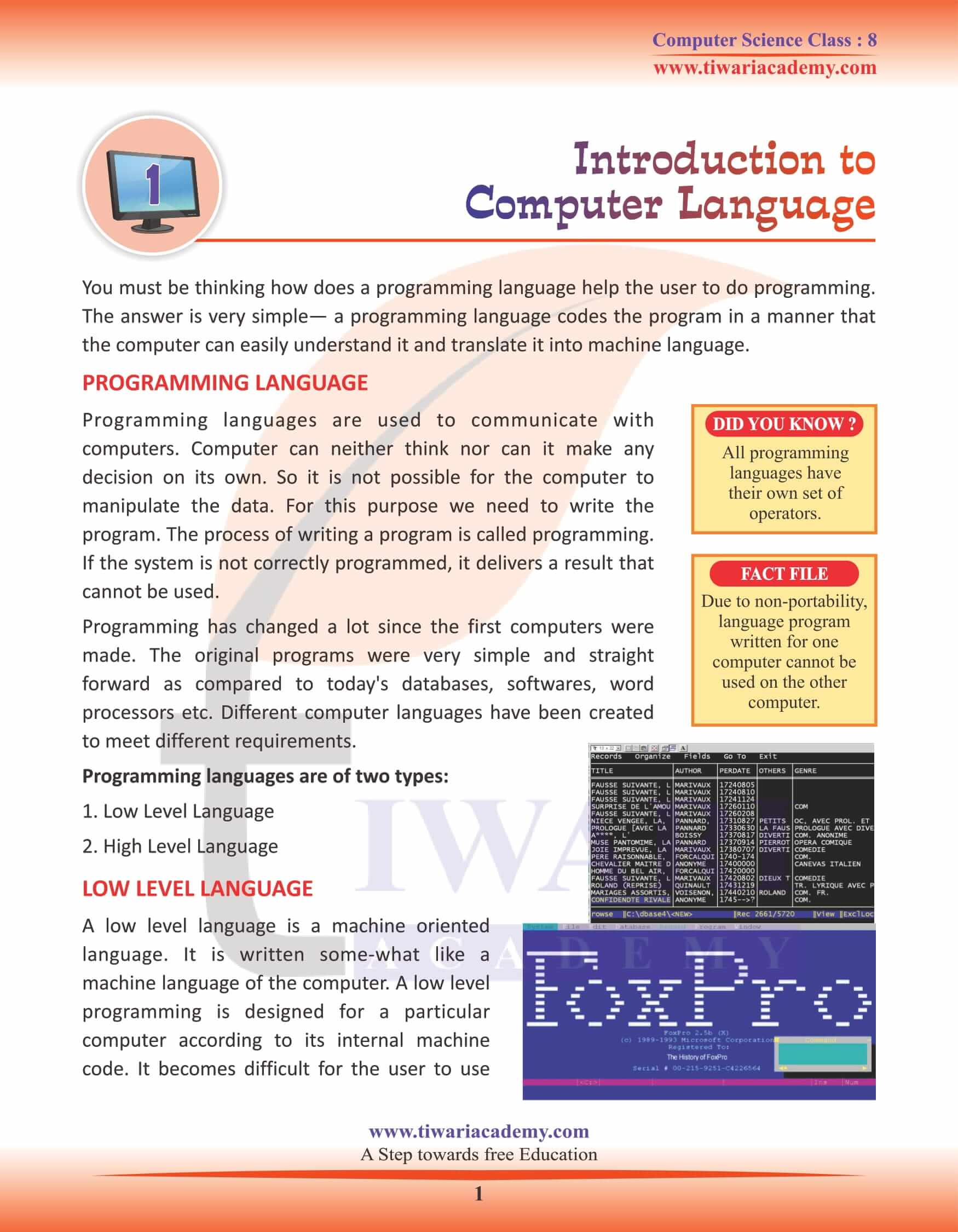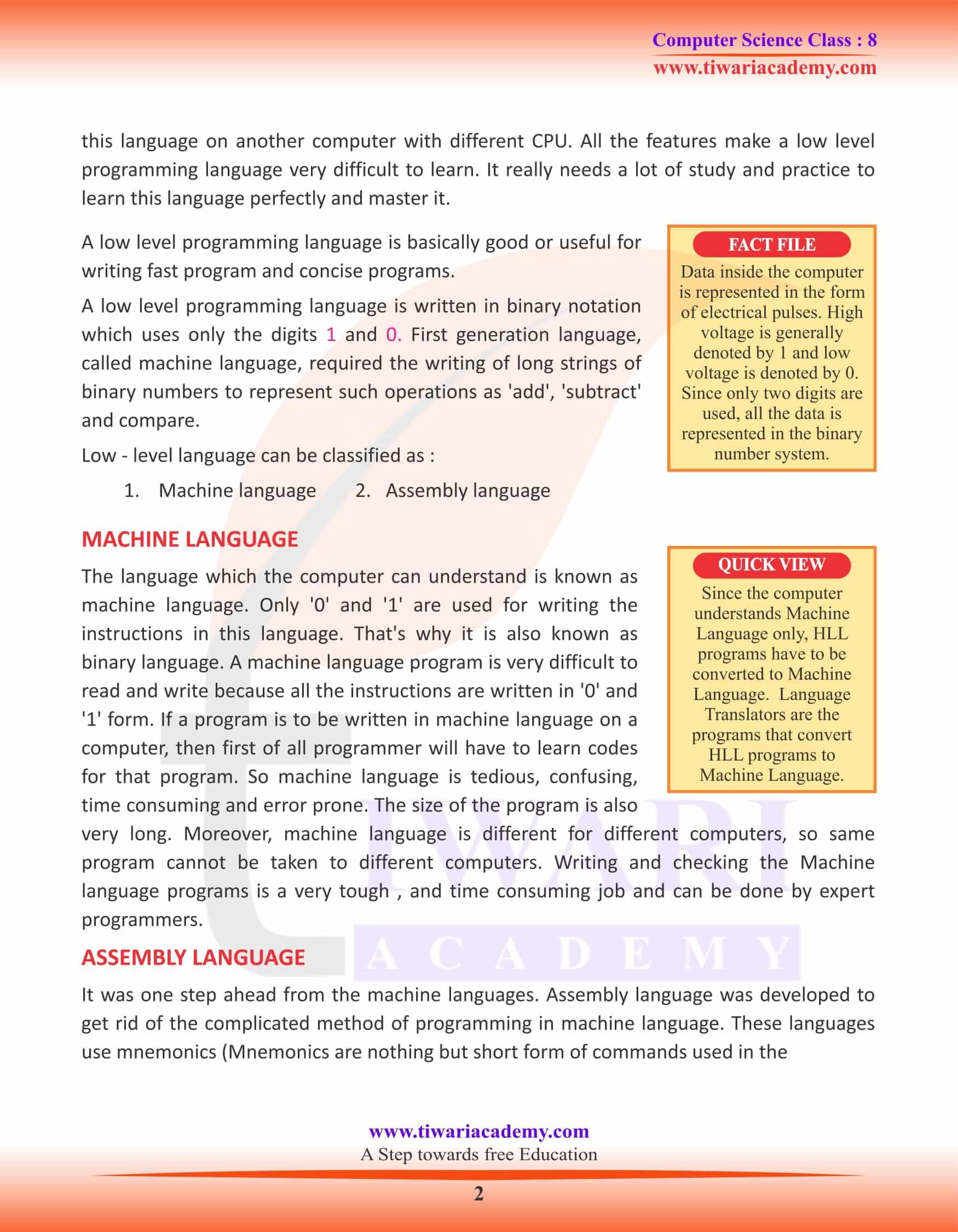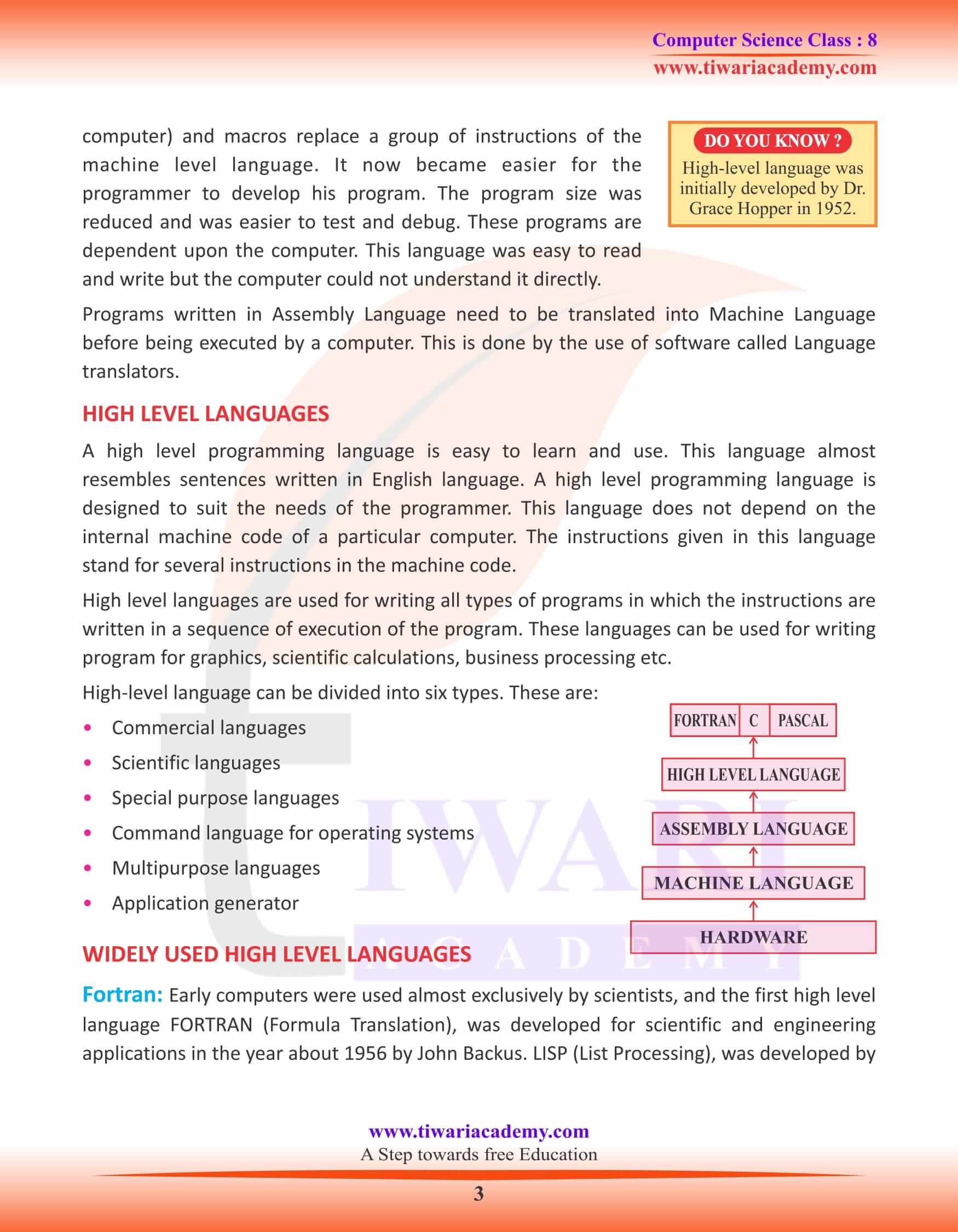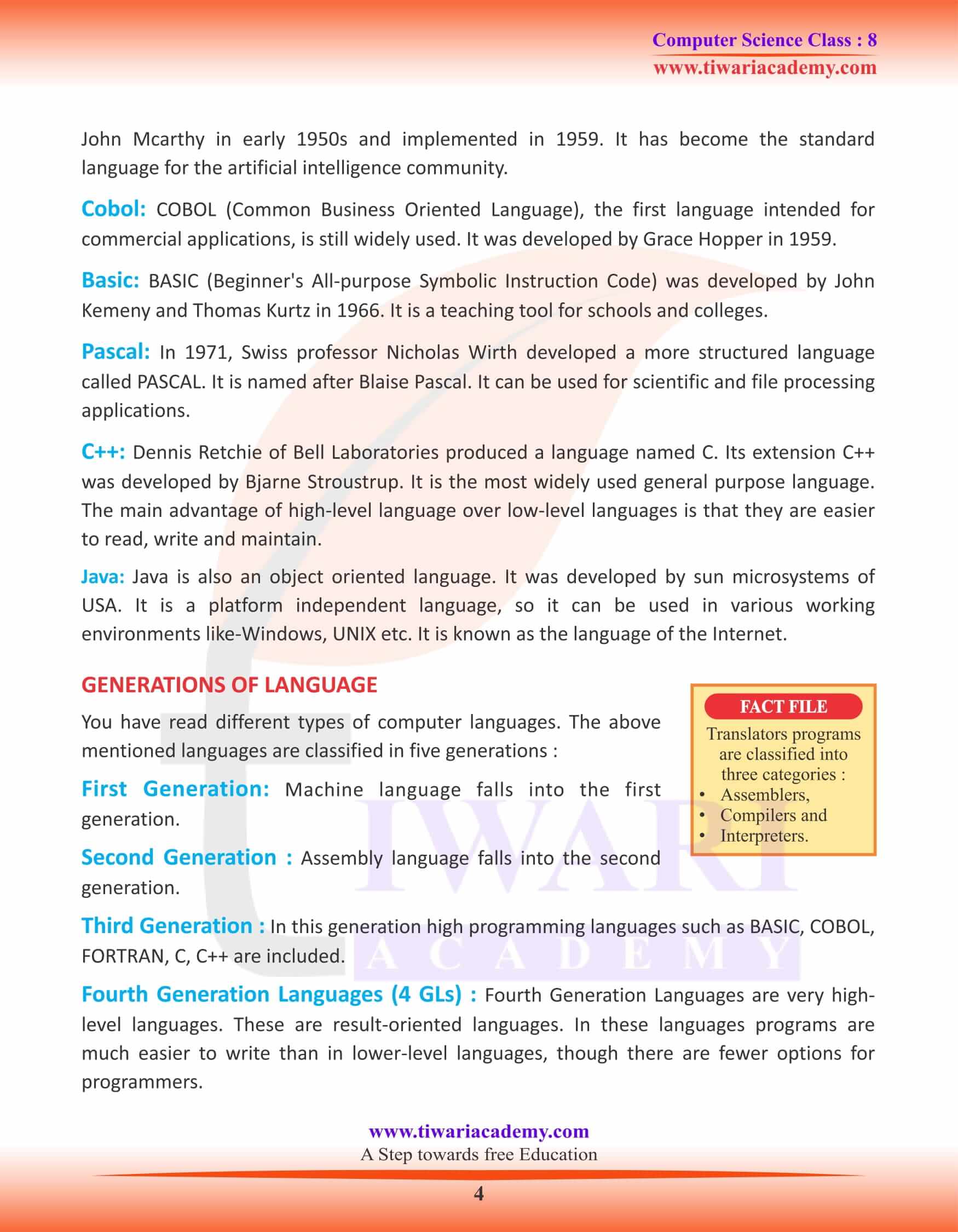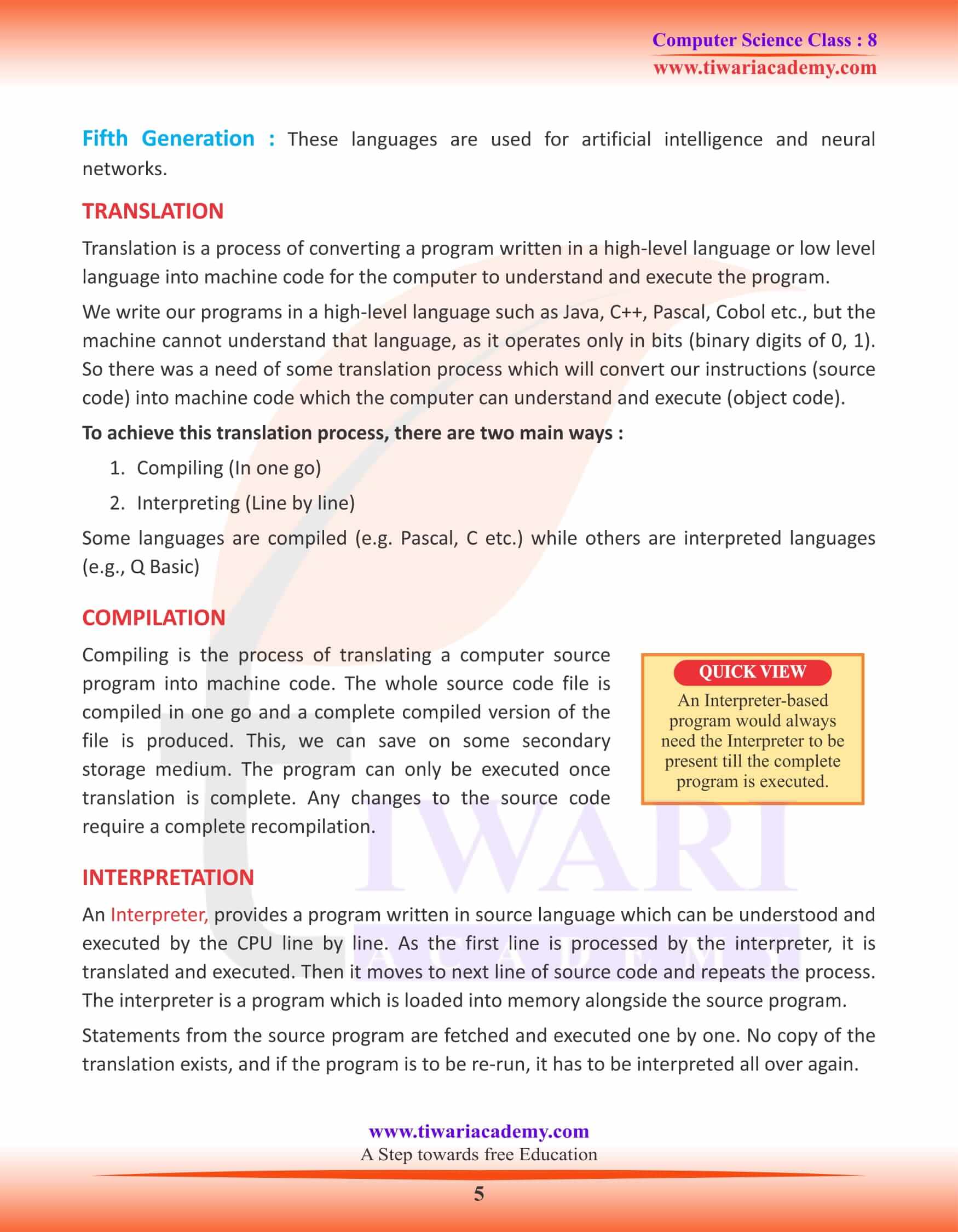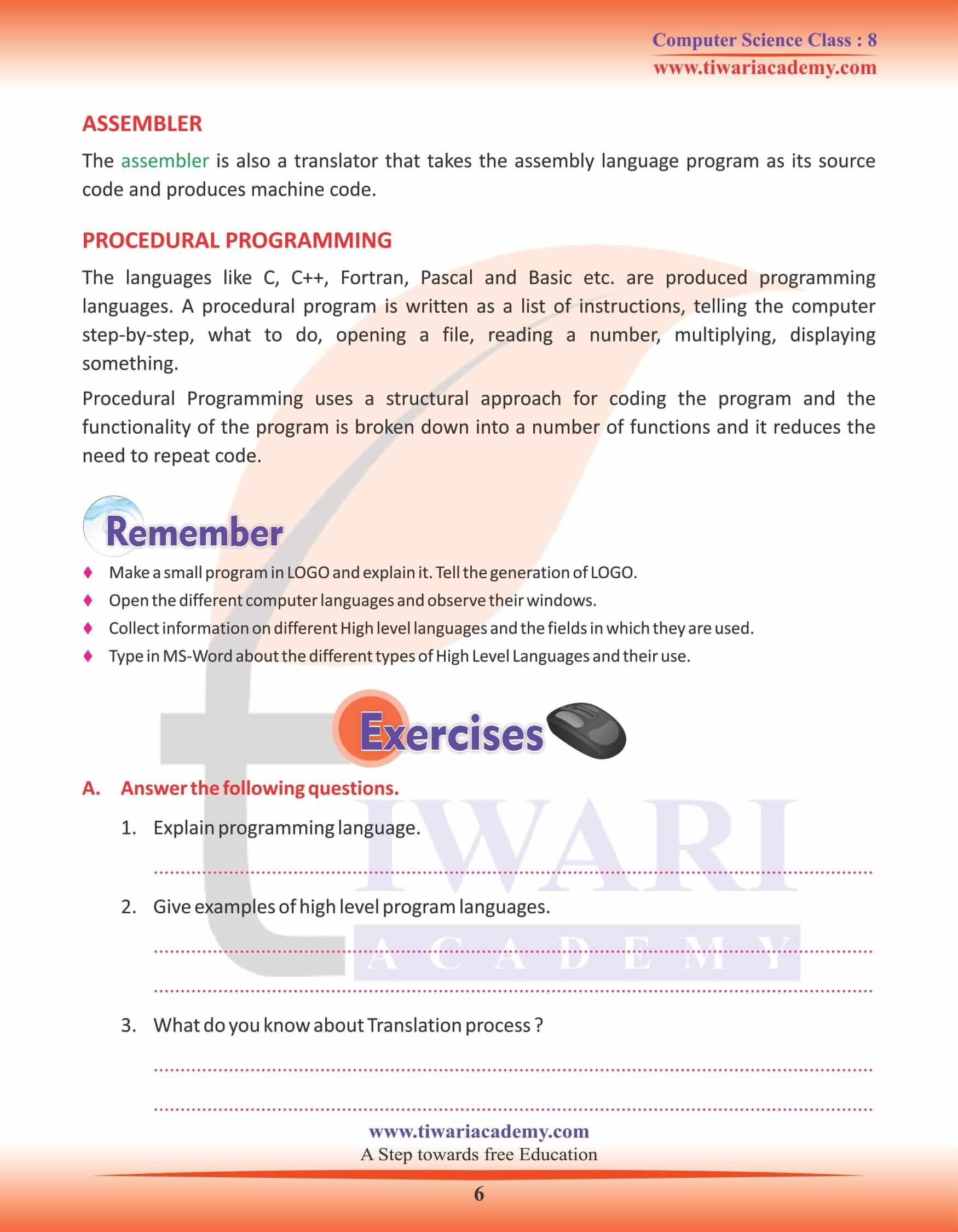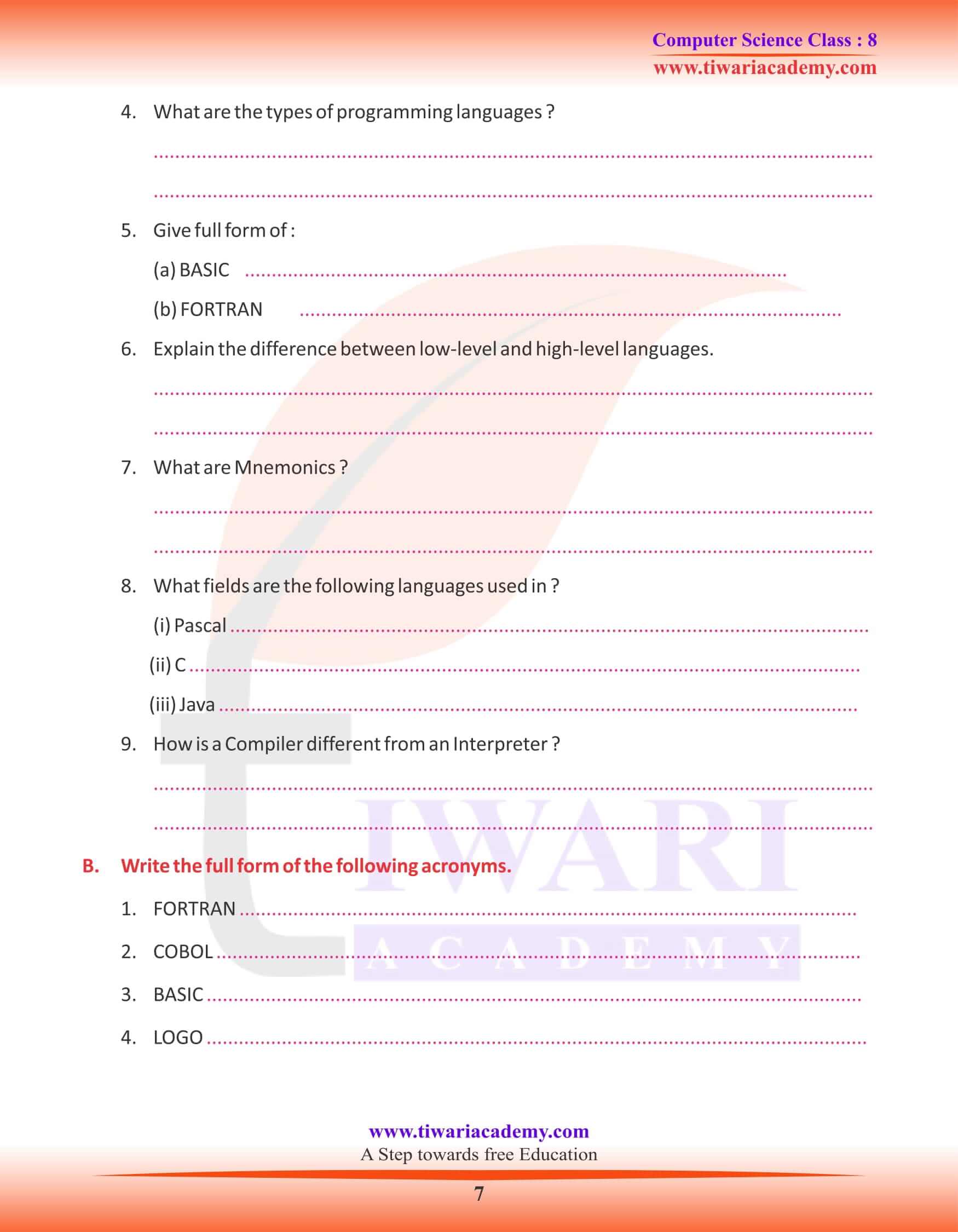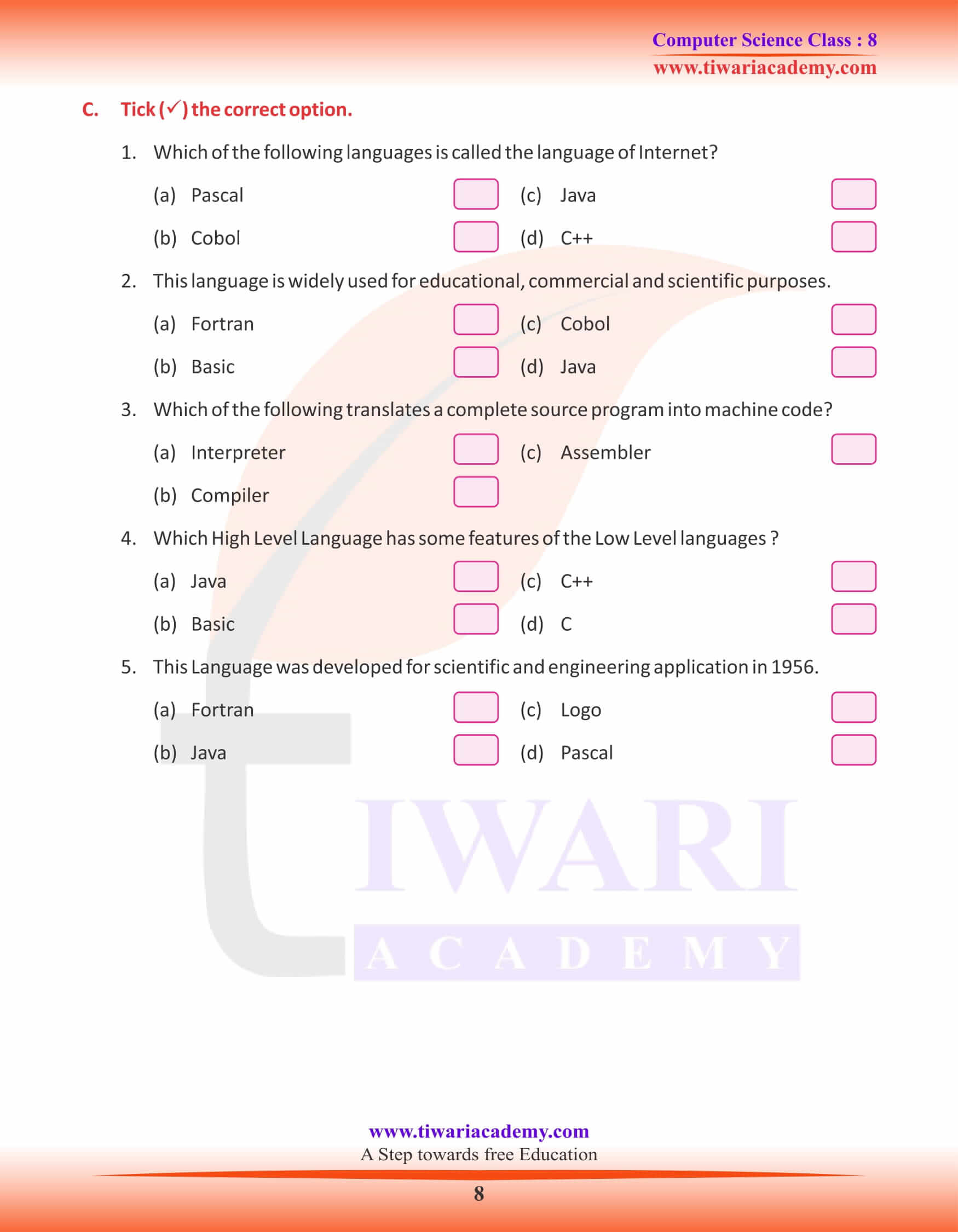NCERT Solutions for Class 8 Computer Science Chapter 1 Introduction to Computer Language updated for CBSE session 2024-25. Get here Grade 8 Computer book chapter 1 assignments and worksheets which explains about fundamental of computer language.
Class 8 Computer Science Chapter 1 Introduction to Computer Language
PROGRAMMING LANGUAGE
Programming languages are used to communicate with computers. Computer can neither think nor can it make any decision on its own. So it is not possible for the computer to manipulate the data. For this purpose we need to write the program. The process of writing a program is called programming. If the system is not correctly programmed, it delivers a result that cannot be used. Programming has changed a lot since the first computers were made. The original programs were very simple and straight forward as compared to today’s databases, software, word processors etc. Different computer languages have been created to meet different requirements.
Programming languages are of two types:
- Low Level Language
- High Level Language
LOW LEVEL LANGUAGE
A low level language is a machine oriented language. It is written some-what like a machine language of the computer. A low level programming is designed for a particular computer according to its internal machine code. It becomes difficult for the user to use this language on another computer with different CPU. All the features make a low level programming language very difficult to learn. It really needs a lot of study and practice to learn this language perfectly and master it.
A low level programming language is basically good or useful for writing fast program and concise programs. A low level programming language is written in binary notation which uses only the digits 1 and 0. First generation language, called machine language, required the writing of long strings of binary numbers to represent such operations as ‘add’, ‘subtract’ and compare. Low – level language can be classified as:
- 1. Machine language
- 2. Assembly language
MACHINE LANGUAGE
The language which the computer can understand is known as machine language. Only ‘0’ and ‘1’ are used for writing the instructions in this language. That’s why it is also known as binary language. A machine language program is very difficult to read and write because all the instructions are written in ‘0’ and ‘1’ form. If a program is to be written in machine language on a computer, then first of all programmer will have to learn codes for that program.
So machine language is tedious, confusing, time consuming and error prone. The size of the program is also very long. Moreover, machine language is different for different computers, so same program cannot be taken to different computers. Writing and checking the Machine language programs is a very tough, and time consuming job and can be done by expert programmers.
ASSEMBLY LANGUAGE
It was one step ahead from the machine languages. Assembly language was developed to get rid of the complicated method of programming in machine language. These languages use mnemonics (Mnemonics are nothing but short form of commands used in the computer) and macros replace a group of instructions of the machine level language. It now became easier for the programmer to develop his program. The program size was reduced and was easier to test and debug. These programs are dependent upon the computer. This language was easy to read and write but the computer could not understand it directly.
HIGH LEVEL LANGUAGES
A high level programming language is easy to learn and use. This language almost resembles sentences written in English language. A high level programming language is designed to suit the needs of the programmer. This language does not depend on the internal machine code of a particular computer. The instructions given in this language stand for several instructions in the machine code. High level languages are used for writing all types of programs in which the instructions are written in a sequence of execution of the program. These languages can be used for writing program for graphics, scientific calculations, business processing etc. High-level language can be divided into six types. These are:
- Commercial languages
- Scientific languages
- Special purpose languages
- Command language for operating systems
- Multipurpose languages
- Application generator.
WIDELY USED HIGH LEVEL LANGUAGES
FORTRAN: Early computers were used almost exclusively by scientists, and the first high level language FORTRAN (Formula Translation), was developed for scientific and engineering applications in the year about 1956 by John Backus. LISP (List Processing), was developed by John Mcarthy in early 1950s and implemented in 1959. It has become the standard language for the artificial intelligence community.
COBOL: COBOL (Common Business Oriented Language), the first language intended for commercial applications, is still widely used. It was developed by Grace Hopper in 1959.
Basic: BASIC (Beginner’s All-purpose Symbolic Instruction Code) was developed by John Kemeny and Thomas Kurtz in 1966. It is a teaching tool for schools and colleges.
Pascal: In 1971, Swiss professor Nicholas Wirth developed a more structured language called PASCAL. It is named after Blaise Pascal. It can be used for scientific and file processing applications.
C++: Dennis Ritchie of Bell Laboratories produced a language named C. Its extension C++ was developed by Bjarne Stroustrup. It is the most widely used general purpose language. The main advantage of high-level language over low-level languages is that they are easier to read, write and maintain.
Java: Java is also an object oriented language. It was developed by sun micro-systems of USA. It is a platform independent language, so it can be used in various working environments like-Windows, UNIX etc. It is known as the language of the Internet.
